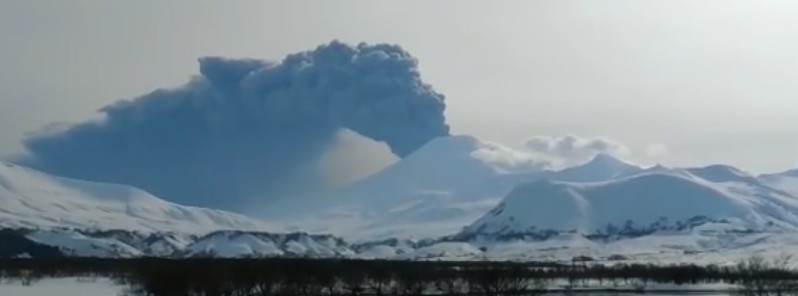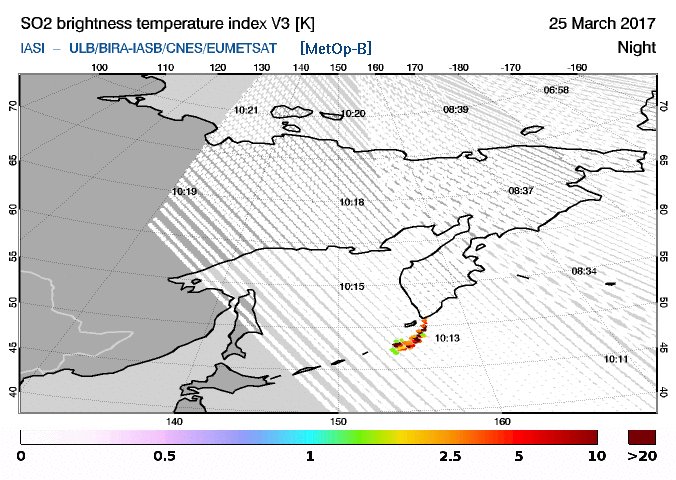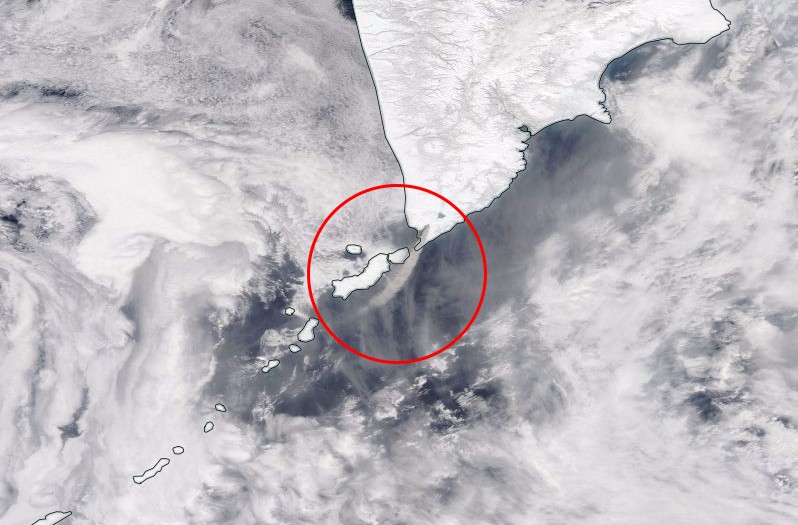Kambalny volcano erupts after 248 years of sleep, Russia

A major eruption started at Kamchatkan Kambalny volcano at 21:20 UTC on March 24, 2017, prompting authorities to raise the Aviation Color Code to Orange. According to experts, the sharp intensification of the volcano was a complete surprise. Although there are reports of an increase in activity in 1769, the last major eruption of this volcano took place in 1350.
At 21:20 UTC, KVERT said satellite data showed an ash plume about 35 km (21.7 miles) southwest from the volcano. Volcanic cloud was reaching a height of 5 – 6 km (16 400 – 19 680 feet). By 01:34 UTC on March 25, the plume was already about 100 km (62 miles) SSW from the volcano and by 13:24 UTC it was 550 km (341 miles) SSW. At the time, satellite data showed volcanic cloud reaching 5 km (16 400 feet).
An explosive eruption of the volcano continues, KVERT said. Ash explosions up to 6 – 8 km (19 700 26 200 feet) a.s.l. could occur at any time. Ongoing activity could affect international and low-flying aircraft.

Credit: EUMETSAT/MetOp-B

Kambalny volcano erupting on March 25, 2017. Credit: NASA Aqua/MODIS
"This is the first scientific observation of a major volcanic event at Kambalny," said Olga Kirin, head of KVERT group. "According to tephrochronology, a strong eruption occurred 600 years ago, but there is information about the increase in activity some 250 years ago," she added. "The volcano is under our close supervision, but it is hard to say what will happen next."
The nearest settlement is located some 77 km (47.8 miles) away from the volcano.
Video courtesy Siberian Times
Video courtesy Александр Солодиков
Geological summary
The southernmost major stratovolcano on the Kamchatka peninsula, 2116-m-high Kambalny has a summit crater that is breached to the SE. Five Holocene cinder cones on the W and SE flanks have produced fresh-looking lava flows. Beginning about 6300 radiocarbon years ago, a series of major collapses of the edifice produced at least three debris-avalanche deposits.
The last major eruption took place about 600 years ago, although younger tephra layers have been found, and an eruption was reported in 1767. Active fumarolic areas are found on the flanks of the volcano, which is located south of the massive Pauzhetka volcano-tectonic depression. (GVP)
Featured image: Eruption of Kambalny volcano, southern Kamchatka on March 25, 2017. Credit: Kamchatka Adventures

Really, the volcano is under your supervision. So why did it erupt if it was under your supervision, maybe tell it to quit and go to bed.
Observation is what us puny humans can do